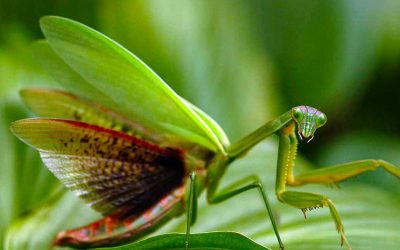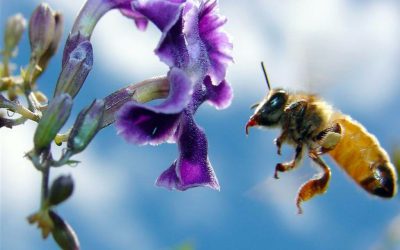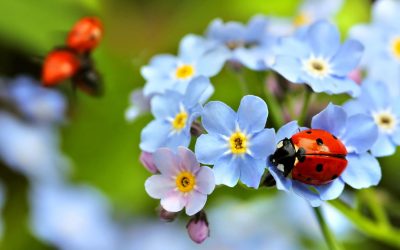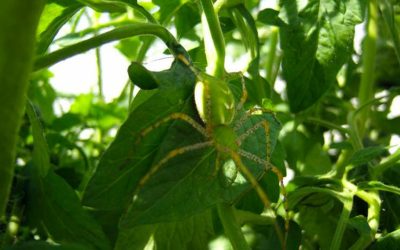The common name praying mantis refers to the typical “prayer-like” posture the insect has, with folded forelimbs. In fact, mantids specialize in preying! The preying mantis is almost a perfect insect-hunting machine. This may be why mantids are one of the first species people think of when the term beneficial insect is mentioned.
Beneficial Insects
What Makes Honey Bees Unique Among Pollinators
The honey bee is responsible for approximately 80% of the pollination of fruits, nut, grains, and vegetables in the United States today. Honey bees are not native to North America; they were brought here by European settlers in the colonial days to pollinate their crops and for the products created or gathered by the honey bees-honey, propolis, royal jelly, pollen, and beeswax.
Ladybug
What is it about the tiny Lady Beetle that makes people like them? Is it their bright colors or domed shape? Or do we sense how much good they’ve done us through the centuries? Whatever the attraction, it’s gone on for a long time and is quite widespread.
Many European cultures had a high regard for this beetle family as early as the Middle Ages, when they were dedicated to the Virgin Mary.
Green ‘Lynx’ Spider
The Green ‘Lynx’ Spider is found on all kinds of shrub-like plants throughout the southern United States, Mexico, Central America, Venezuela and the West Indies. You can find the Green ‘Lynx’ Spider in woods on tall grasses and in meadows of tall wildflowers, especially on the heads of wild buckwheat. The Green ‘Lynx’ Spider is a common resident in Texas Upper Gulf Coast landscapes and gardens.




